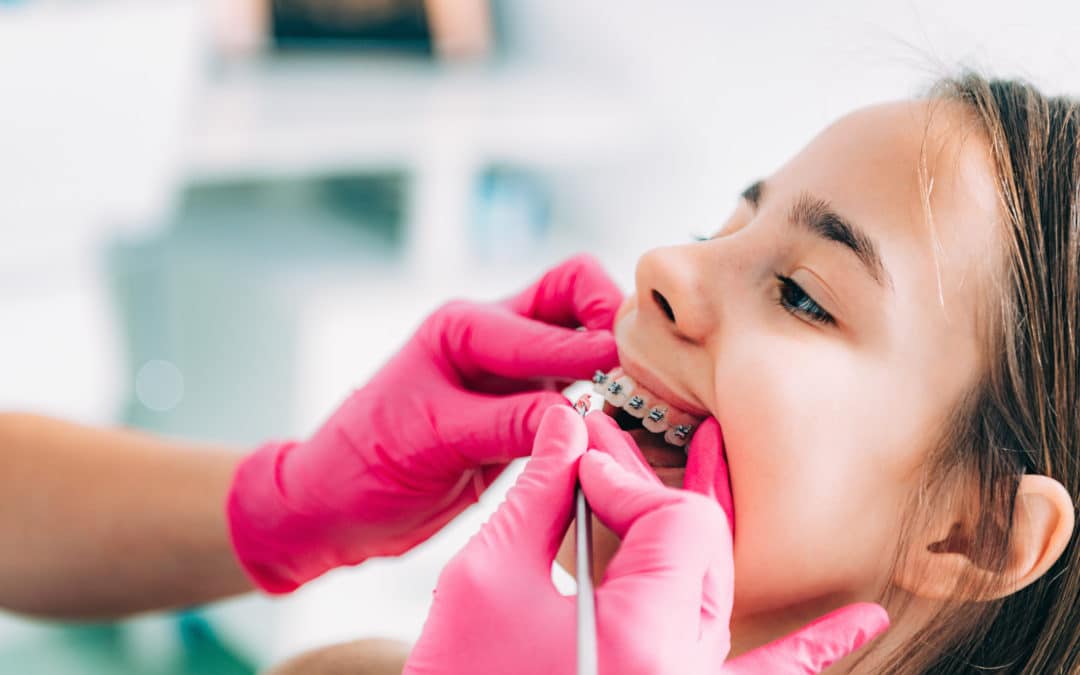Do you look at your teeth and wish they were straighter? If you have misaligned teeth, it can cause issues with your bite. Not only that, but it can lead to tooth decay or gum disease. The best way to fix bite problems is through orthodontic procedures. But with so many dental procedures on offer, what are the different options for tooth alignment? In this article, we’ll take a look at eight of the dental procedures on offer from your Lakeway orthodontics office.
1. Clear Aligners
If you have a malocclusion where your teeth are not in their correct position, clear aligners such as Invisalign aligners may be the best option for you.
Clear aligners work by having detailed scans made of your teeth. These are then used to create aligners that will gently, gradually move your teeth.
Every few weeks, you’ll get a new aligner that will move your teeth slightly closer to their end position.
Clear aligners are removable and look better than other types of braces. They can be used to correct most problems that traditional braces can.
Invisalign is one of the most popular orthodontic treatments.
2. Retainers
Once you’ve completed major orthodontic treatment, your orthodontist may prescribe a retainer for you. This is designed to keep your teeth in the correct position without them drifting back to their previous spot.
If you fail to use your retainer for the first few years after you had aligners or a brace, then your teeth will be very likely to move out of position.
You can either have fixed or removable retainers. Fixed retainers are then bonded to the back of your teeth.
3. Traditional Metal Braces
When people think of orthodontics, the first thing that often comes to mind is traditional metal braces. These consist of metal brackets through which a metal wire is then fed.
This wire will pull your teeth into their new position by providing a gentle constant force. The brace’s wires are then held in position with small rubber bands called ‘ligatures’.
Over a period of time, this type of brace has become sleeker and these days are a lot more comfortable than they may have been in years gone by.
4. Headgear
When the upper jaw has grown quickly, an orthodontist may suggest headgear. This is a removable device with a strap that goes around the back of your head. This is then fixed to a metal wire at the front. This is sometimes referred to as a ‘face bow.’
With headgear, the teeth will be held into position so that their growth can slow down. The bottom jaw will be free to grow more rapidly.
Headgear is often used to stop overbite which is brought about by uneven jaw development.
5. Space Maintainers
Space maintainers are often used where baby teeth have fallen out too early. These can be either fixed or removable. The purpose of space maintainers is to ensure there is a gap that is large enough for adult teeth to come through.
These are essential as problems with the missing tooth may result in crowded adult teeth if it’s not addressed at the earliest opportunity.
Fixed space maintainers are made up of metal wires similar to those used on a set of braces. These are then connected to bands on the teeth on both sides of the gap.
Removable space maintainers consist of an acrylic base, this sits over the jaw and uses wires made of plastic or metal wires between the teeth.
6. Orthodontic Archwires
Orthodontic archwires are carefully designed to fit the shape of your dental arch so that you can correct the position of your teeth.
To help fix major dental problems such as rotations and crowding, archwires are often inserted at the very start of orthodontic treatment.
7. Lingual Braces
Lingual braces work in a similar way to traditional braces in that they’re attached to your teeth and correct imperfect alignment. With this type of brace, brackets are affixed to the back of the teeth so they’re not visible.
The benefits of this system are that you’ll still be able to achieve the same results as a traditional brace without having to worry about feeling self-conscious about the fact that you have a brace.
Also, the other benefit of this type of brace is that it has less of an impact on your speech as there won’t be any interference with the movement of the lips.
8. Ceramic Braces
In addition to traditional metal braces, you can also get ceramic braces.
Ceramic braces are tooth-colored, this provides them with a more subtle aesthetic. In much the same way as with metal braces, ceramic braces consist of brackets that are attached to your teeth,
Again, wires are threaded through the brackets and these are then held in place with ligatures.
With this type of brace, the brackets are typically made using ceramic or porcelain material. The wires are then made of metal alloys and will gently and gradually pull your teeth into position.
The Dental Procedures Your Lakeway Orthodontics Office Offers
There are many ways that a dental specialist can correct problems with your bite or straighten your teeth. From traditional metal braces to Invisalign and retainers, there are many tools and forms of treatment available at your Lakeway orthodontics office.
Are you looking to correct a problem with your teeth? Get in touch today to arrange an appointment to discuss your orthodontic needs.




